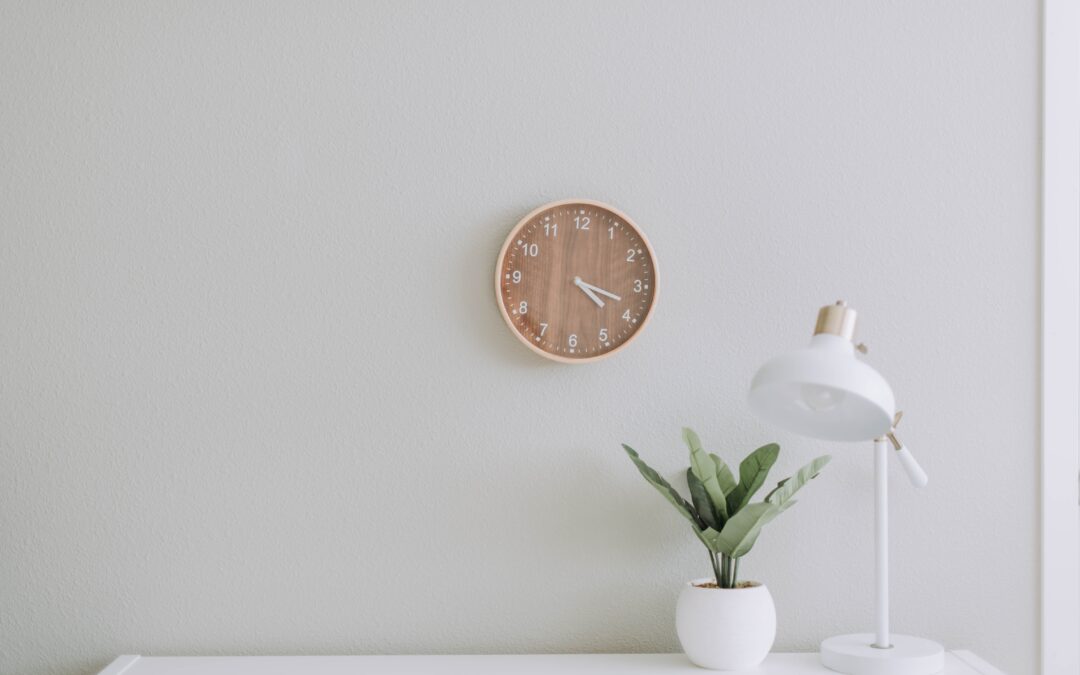Do you find yourself having a hard time adjusting when daylight saving time begins or ends? Our internal clocks differ greatly from the clock on our wrists or our nightstands. The amount of light in the day dictates this mostly. In winter, there are less daylight hours, forcing us to be inside and want more sleep. However in summer, there is mostly daylight hours, making us want to be outside and stay awake longer. Our bodies process this rise and set of the sun with the seasons. And within that, we can find our internal clock and help it adjust.
In Winter, the sun rises after 7 am and sets before 5 pm. In Summer, the sun rises before 7am and sets after 8pm. This is a drastic change to observe, but that is why Spring and Fall are important in this transition. The seasonal change in Summer will be more difficult to adjust to if you don’t use Spring to help, the same goes for Fall with Winter. In order to know how to tailor to our external clock, we must observe how our daily internal clock functions.
In Ayurveda, there is a daily cycle for the doshas and optimal times to utilize each one. In the hours from 6 to 10, morning and evening, this is predominantly Kapha time. Think about this time when you are waking up as well as winding down in the evenings. From the hours of 10 to 2, morning and evening, this is primarily Pitta time. Think about this time when you are starting work, but also the hours of when you are starting sleep. The final time is from 2 to 6, morning and evening. This is optimal Vata time. This is about the time in your afternoon when you are finishing work, but also right before you wake up in the morning. This clock remains the same no matter the time change or season. Observing these times while also adjusting your clock go hand in hand
In springtime, as the sun slowly starts to come up earlier and set later so should you. As a general rule, waking within an hour of the sun rising and setting can help this process. During the morning in Spring, with the sun rising, so do you. During this Kapha time, be slow and mindful of how you begin your day. As you move into the Pitta hours of the early afternoon, eat a big lunch and make sure to take a break for yourself and do not use too much fire to push you so that you feel burnt out by 3 or 4. As the later afternoon of the Vata hours approach, allow yourself to be in touch with your mind and allow any inspiration that may come. After work, begin to wind down as the Kapha hours begin once again. Let you mind and body prepare for sleep. Getting in bed before 10, before the Pitta hours begin, will prevent that “second wind” that some people feel if they don’t go to sleep until later. This way, when Summer begins and the sun sets at almost 9 pm, you are fully in touch with your internal clock so that you will go to sleep within an hour of the sun setting, before 10 and before the Pitta hours.
This is circadian rhythm. Biological clock genes govern and direct daily, diurnal rhythms of virtually all biological and physiological systems. A loss of normal clock gene expression leads to a desynchronization of fundamental biological and physiological processes.
The 6 most fundamental variables governing circadian entrainment in most lifeforms on planet earth are:
- Light and dark
- Caloric availability and caloric deficit
- Hot and Cold: changes to body temperature
The exposure of light from the sun during daytime and darkness at nighttime is the most ancient and fundamental diphasic tandem influencing circadian biology. Ayurveda teaches us how to live in harmony with nature for optimal health and longevity. Maintaining health of a healthy person is one of the main goals of Ayurveda. Therefore, it is critically important to follow the bio-rhythm of nature.
